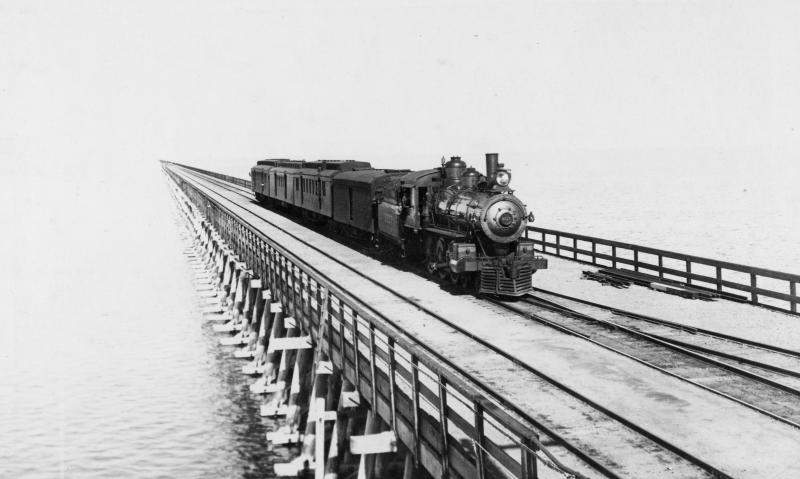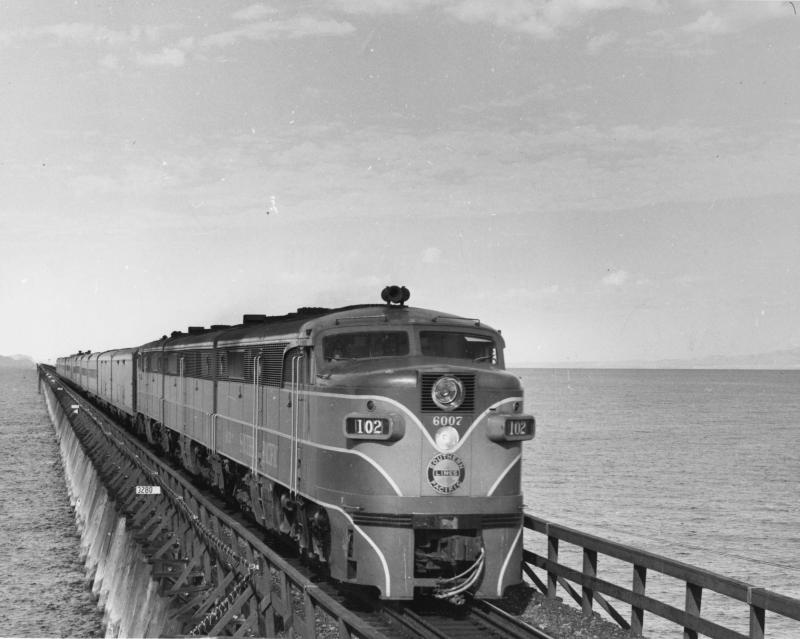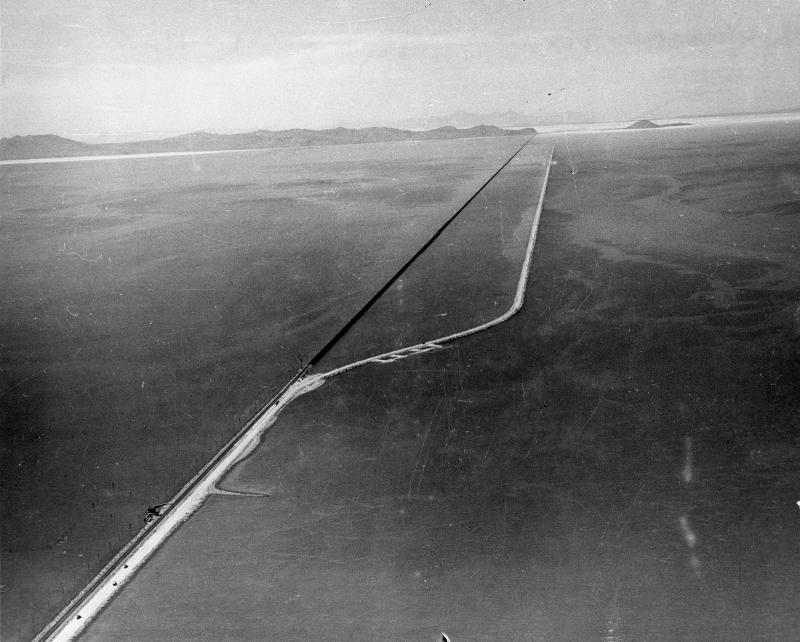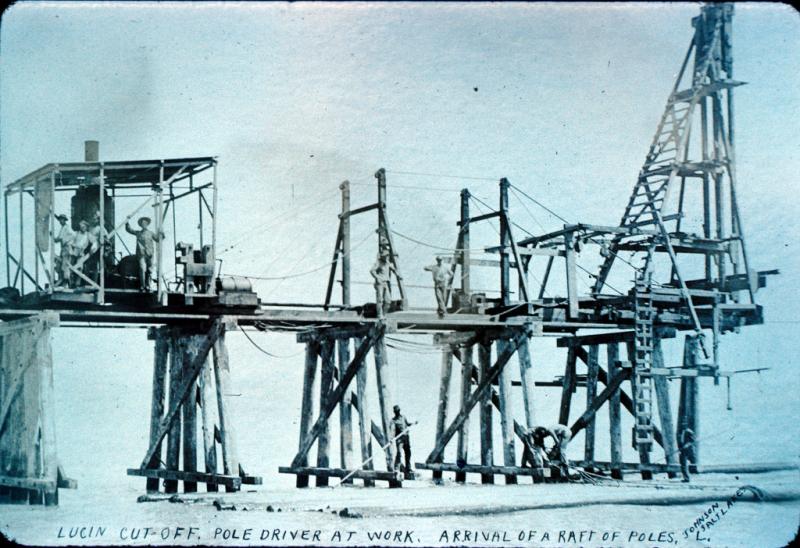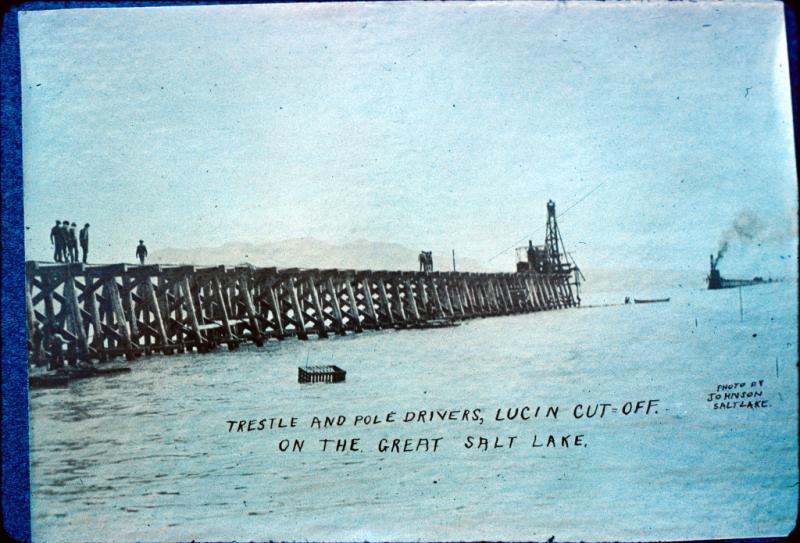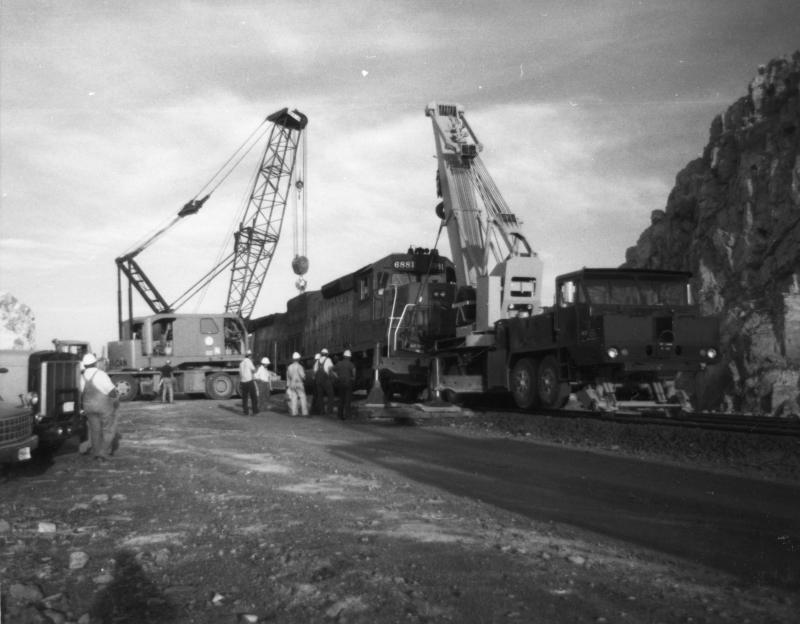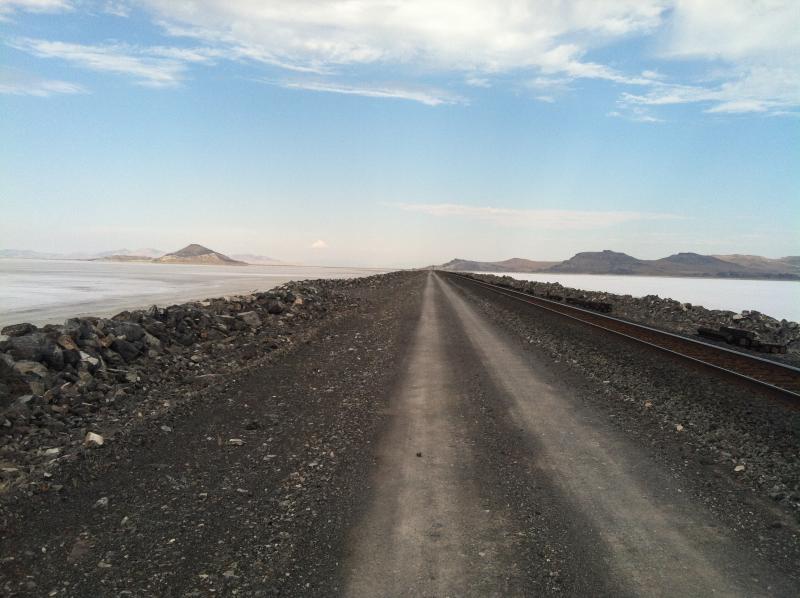Lucin Cutoff
The Lucin Cutoff is a 12 mile section of railroad track that cuts directly across the Great Salt Lake, cutting the Lake in two distinct sections. The Cutoff was built by the Southern Pacific Railway between February 1902 and March 1904 as a way of shortening (by 44 miles) the first Transcontinental Railway route and avoiding the steep climbs of the Promontory Mountains. This first cutoff was built as a trestle out of logs piled vertically into the lakebed. By 1908, five passenger trains and seven freight liners were using the trestle every day, in each direction. During World War II, the original line around the north side of the lake was removed, with the metal going to the war effort, making the Cutoff the primary route for the Overland line. On New Year’s Eve, 1943, the Cutoff became the site of tragedy when a fast-moving mail train ran into a passenger train in thick fog, killing 48 people. In the late 1950s the original trestle was replaced with an earthen causeway, which effectively separated the lake into two distinct systems. Two culverts were included in the construction to try and equalize water in the two arms and to allow boat traffic, though the level of the north arm began to decline relative to the south arm as soon as the earth causeway was constructed. The high water flooding of the mid-1980s prompted the state of Utah to cut an additional 300 foot breech, spanned by a bridge. The two original culverts were closed by Union Pacific in 2012 and 2013, due to concerns over the sinking of the causeway into the lakebed, and a new 180 foot culvert and bridge were opened on December 1st, 2016.


